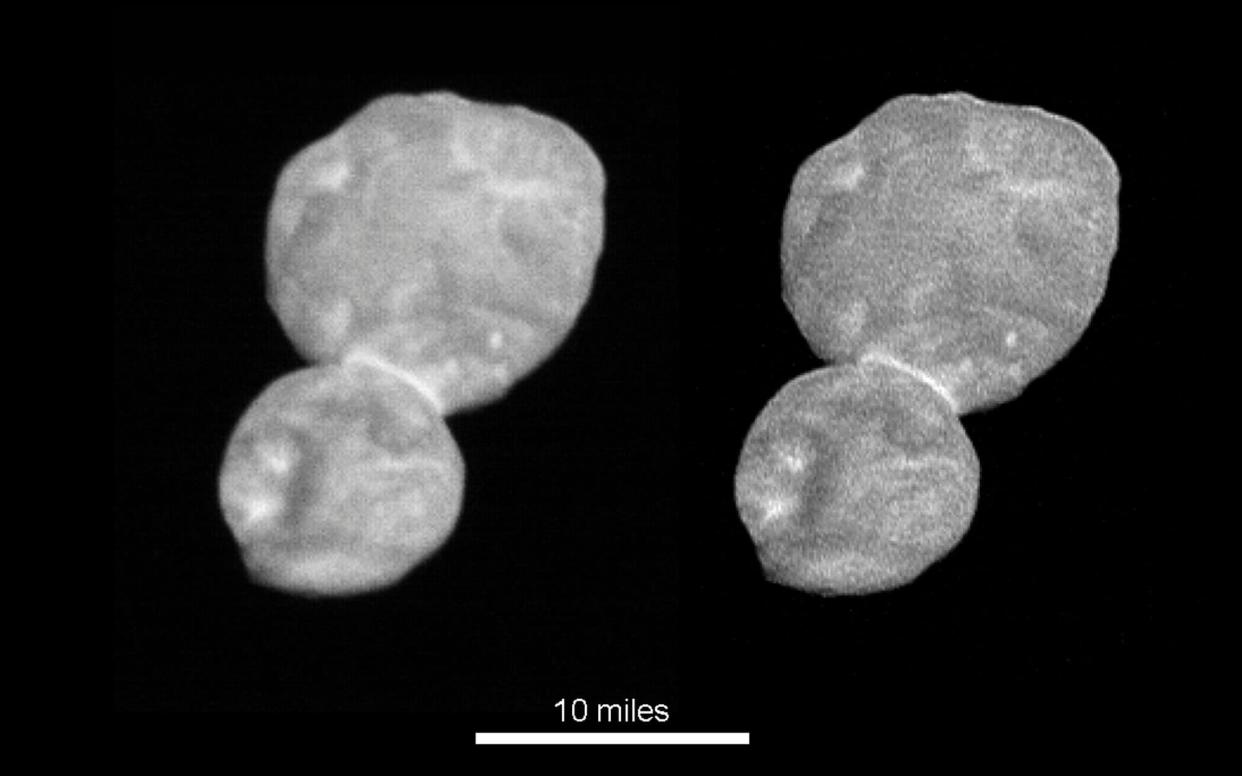Ultima Thule: First photographs taken by New Horizons spacecraft reveal distant world resembles snowman

Nasa has revealed the first photo of the distant world of Ultima Thule, the most distant object that humanity has ever explored. The tiny, icy object resembles a snowman in the photo, which is just the first of a whole host of data that the space agency hopes to receive back from its New Horizons spacecraft.
The picture came after flight controllers said they had had success in the high-risk, middle-of-the-night encounter at the mysterious body known as Ultima Thule on the frozen fringes of our solar system, about four billion miles away in a dark and frigid region of space known as the Kuiper Belt.
Now they will work to download and look through all of the data sent back over that long distance, a process that could take years.
"That image is so 2018... Meet Ultima Thule!" said lead investigator Alan Stern, doing little to hide his joy as he revealed a new sharper image of the cosmic body, taken at a distance as close as 17,000 miles with a resolution of 140 metres per pixel.
"That bowling pin is gone - it's a snowman if anything at all," Dr Stern said during a Nasa briefing.
"What this spacecraft and this team accomplished is unprecedented."

Ultima Thule's surface reflects light about as much as "garden variety dirt," he said, as the sun's rays are 1,600 times fainter there than on Earth.
The body is roughly 19 miles long and completes its own rotation in about 15 hours. Nasa dubbed the larger lobe Ultima, and the other, which is about three times smaller, Thule.
"This is the first object that we can clearly tell was born this way" Stern said, instead of evolving as a sort of "bi-lobe."
"This really puts the nail on the coffin now. We know that this is how these kinds of objects in many cases form."

Around 4.5 billion years ago a cloud of frozen pebbles began to join forces, gradually forming two bodies - Ultima and Thule.
Slowing turning, they eventually touched at each other at what mission geology manager Jeff Moore called an "extremely slow speed" - maybe just one to a few miles per hour.
If such a meeting occurred between two cars in a parking lot, he said, no driver would bother writing it up. The lobes, according to Moore, are really just "resting on each other."
"New Horizons is like a time machine, taking us back to the birth of the solar system," Moore said. "We are seeing a physical representation of the beginning of planetary formation, frozen in time."
Carly Howett, another researcher of the mission, noted that "we can definitely say that Ultima Thule is red," perhaps due to irradiation of ice.
The close approach came a half-hour into the new year, and three years after New Horizons' unprecedented swing past Pluto.

